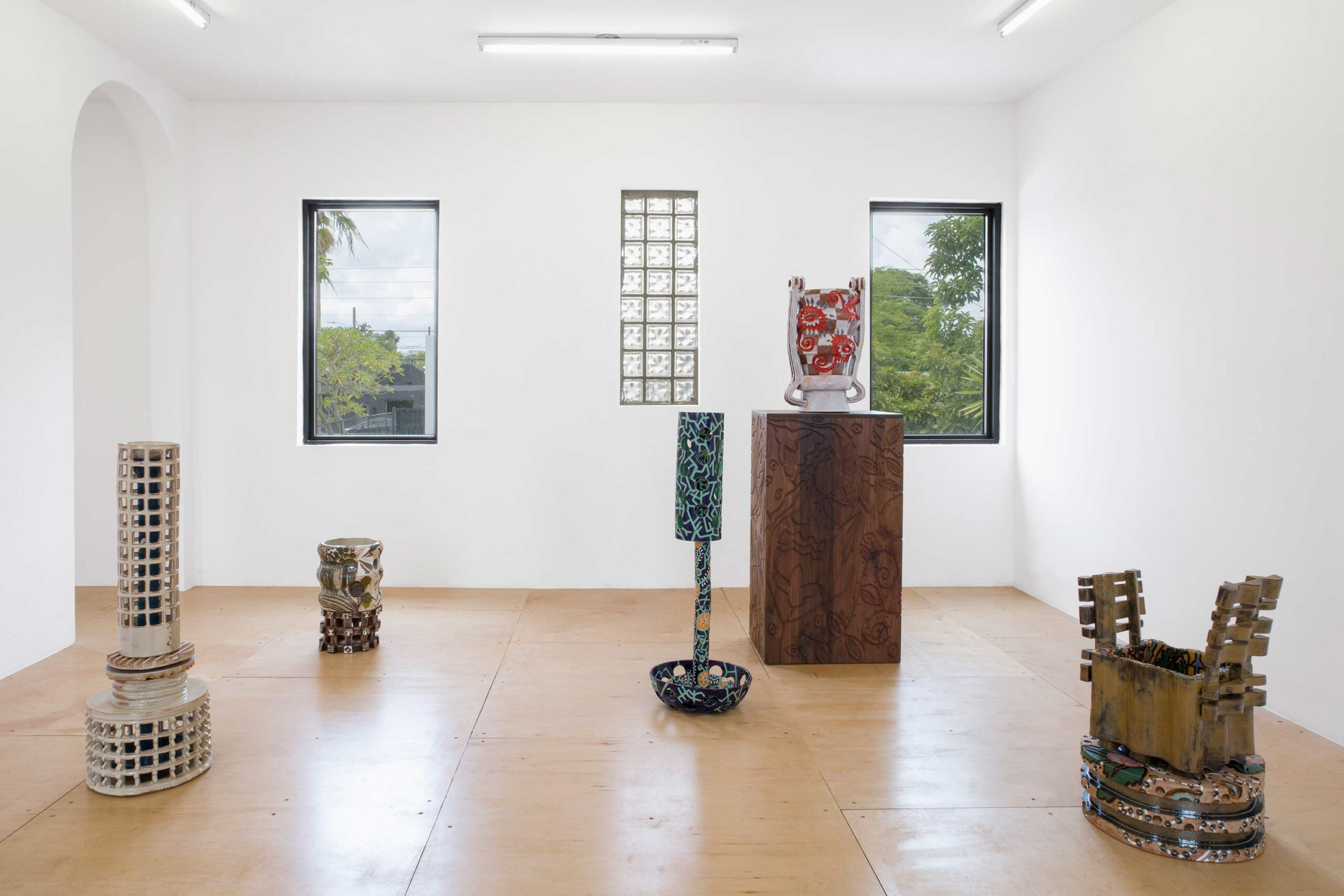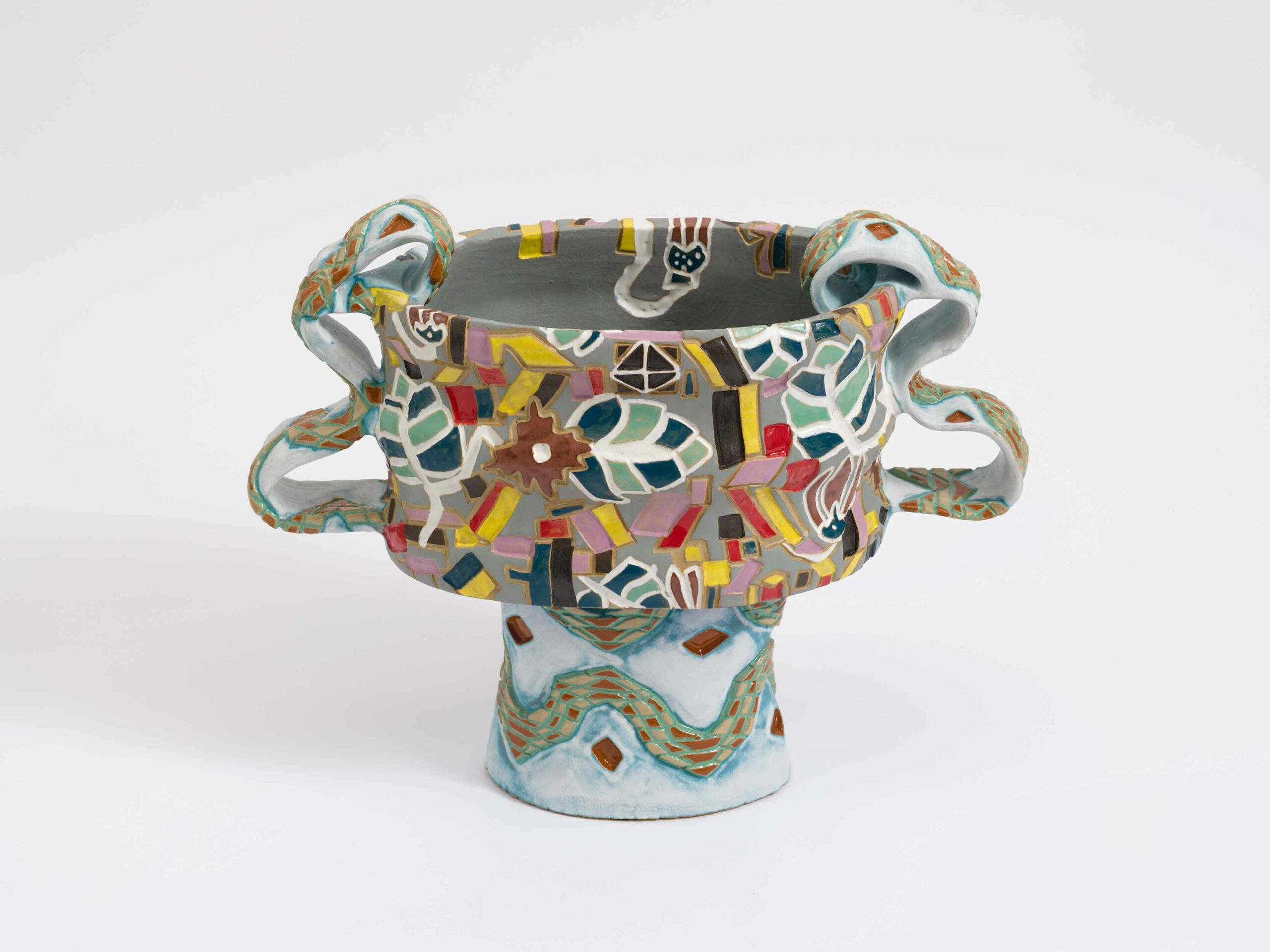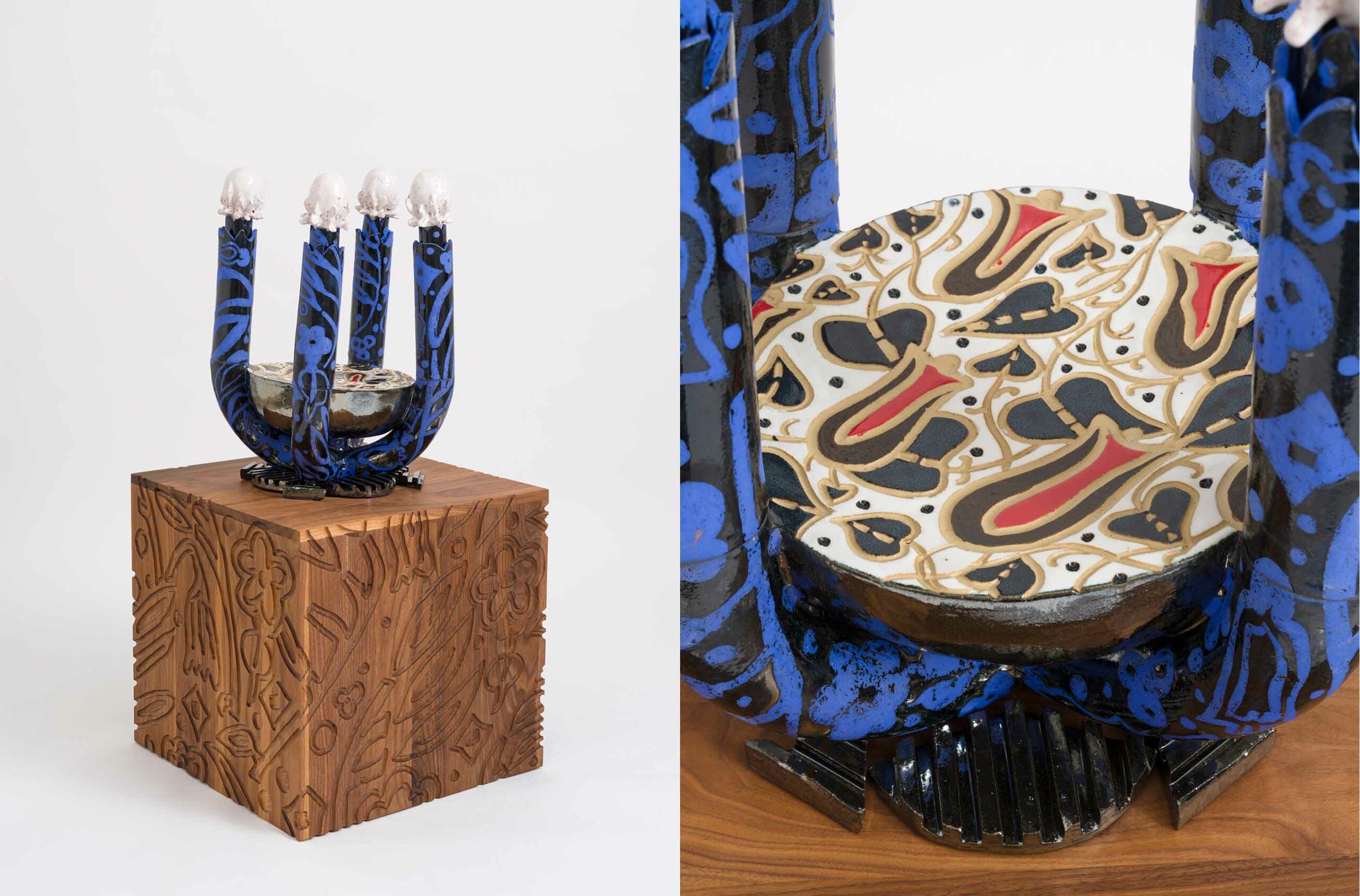Ceramicist Bari Ziperstein’s uses historicity and craftsmanship to create ‘Fantasy Pieces’

The Los Angeles-based artist and designer, whose work is informed by rigorous research and application, uses her work to challenge American consumerist culture.
American artist and ceramicist Bari Ziperstein’s work is a material exploration of the connections between current socio-political moments and various historical periods (such as the Soviet Union). Layering imagery and ideas from myriad histories into contemporary art pieces, her sculptures are a patchwork of heritage and modernity, personal and political. Her practice, which draws on her east-European Jewish ancestry is both deeply personal and incredibly prescient. Engaging with ideas of consumerism, propaganda, and the built environment, the American artist challenges contemporary culture through a historical lens with her sculptural tableaux. For instance, she has previously delved into the imagery and ideology behind Soviet-era propaganda posters, textile design, and even Brutalist architecture.
Fantasy Pieces: Decorative Garments for the Home is her latest series of ceramic artefacts. The themes and motifs for it were conceived in 2022 from her ongoing archival research into Soviet Era aesthetics. Out of this research, the artist and designer shifted her focus to textile and artisan-manufactured objects from Vienna at the turn of the century, notably the work done by Josef Hoffmann and the Wiener Werkstätte (WW). Superimposing patterns and imagery from WW consumer catalogues onto handmade, embellished sculptures, vessels, and pedestals, the series examines the political and material cultures of turn-of-the-century Viennese Design through sculpture.
Currently on view at the Nina Johnson Gallery in Miami till November 18th, this exhibition is the artist’s first solo showcase with the art gallery. The works featured in Fantasy Pieces–a collision of vibrant colour and profuse patterns–represent an alternate universe. Wallpaper patterns from the WW’s catalogues are festooned on undulating vessels, plant stands are reinterpreted as intricate ceramic towers and elegant lighting fixtures. Each piece allows a peek into the fragility of the material narratives of the WW, sumptuously expressed in flowers, plants, and an overarching geometric symmetry. The collection, deftly crafted by Ziperstein celebrates craftsmanship through hand-painted ornament and hand-hewn fantastical objects. The title itself, juxtaposed with the artisanal narrative permeating the Werkstätte, offers a cautionary tale about the metaphorical and fiscal cost of fantasy objects for the home.
The focus on the Wiener Werkstätte reflects Ziperstein’s own preoccupation with the handmade, as exemplified by her manufacturing practice in the studio. The organization, primarily composed of Jewish architects, artists, and designers, was founded in 1903 by Josef Hoffmann and Kolomon Moser. It would go on to lay the foundation of what would later be coined ‘modernism.’ While modernism within the WWs contemporary, Bauhaus’ discourse favoured mass-produced craftsmanship and an industrial aesthetic, the WW established a communal practice that embraced traditional methods of manufacture, albeit with a distinctly avant-garde aesthetic.
A small pamphlet from 1905 outlines their tenet: “The limitless harm done in the arts and crafts field by low-quality mass production on the one hand and by the unthinking imitation of old styles on the other is affecting the whole world like some gigantic flood…It would be madness to swim against this tide. Nevertheless, we have founded our workshop. Where appropriate we shall try to be decorative without compulsion and not at any price.” The WW’s goal was to encourage patrons to look beyond surface value, and appreciate the process of manufacturing an object. The focus on the handcrafted would eventually lead to their downfall. They aimed to integrate all the arts, aestheticizing everyday life. Mirroring this notion, and presenting it as a form of critique, Ziperstein’s new collection highlights her design principles. The objects represent the artist’s ongoing concern with pushing the boundaries of ceramics, through scale, colour, silhouette, and construction. Juxtaposing history with contemporary artwork, the imagined worlds the objects occupy provide narratives to challenge both the past and the present of design.



